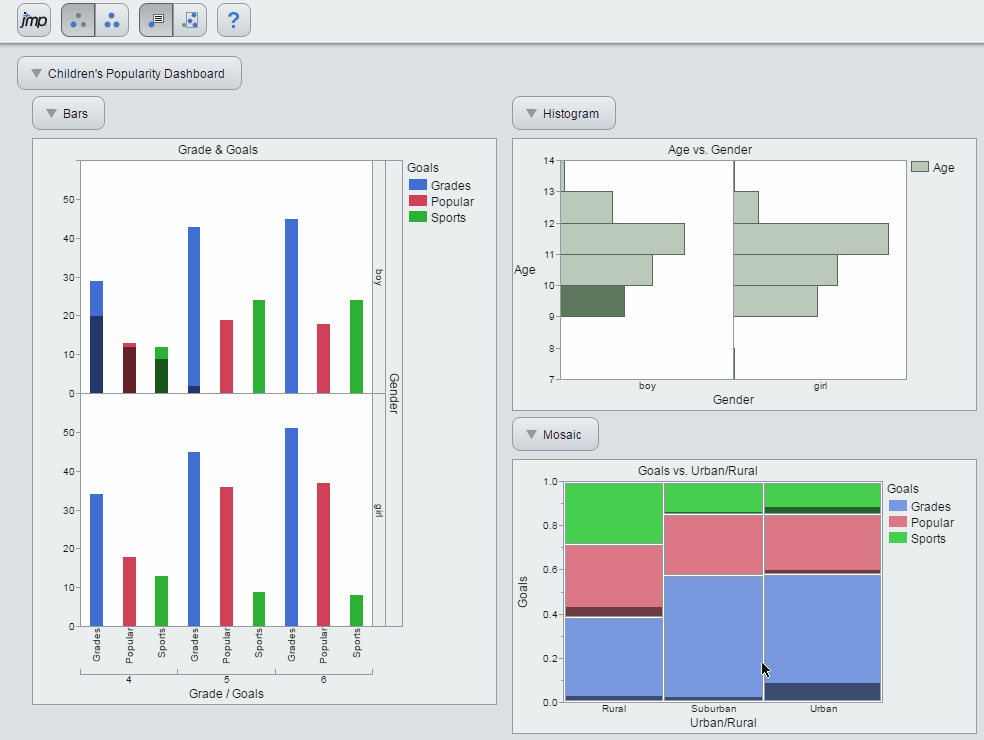

This is the purpose of the next stage of this piece of work (if I can find the time!) – I will release this LeetCode problem as an integrated web based IDE that visualises your code as it executes. What if we could debug in an environment that we are all accustomed to – a highly visual, interactive environment.
Jmp graph builder y2 software#
So what next? Debugging is typically performed in an Integrated Development Environment (IDE) – however, for a lot of new and aspiring Software Engineers, this environment can be difficult to navigate. The code can be found on GitHub – it was put together in an afternoon so please don’t judge! The most complicated part of the solution is structuring it in such a way that the algorithm execution can be ‘slowed down’ and visualised this was achieved through a mix of JavaScript Intervals and Promises. Producing this visualisation was surprisingly simple – D3 is used to create the force-directed graph you see on the left, and Three.js is used to mimic the ‘forest’ we’re trying to chop down. The video is just a snippet, head over to the demo site to view from start to finish. A purple node indicates the ‘frontier’ of the BFS, whilst pink nodes indicate those nodes we have already visited in the search. Within the force-directed view, a red node indicates the current starting position and green indicates the next tree we’re heading for (note how green becomes red as we walk to each tree and cut it down). In the video above, the obstacles are depicted in the grey colour. The goal of LeetCode problem 675 is to cut down trees in a forest, cutting the trees in ascending order and counting the minimum number of steps required – the ‘difficulty’ comes through obstacles in the forest that you cannot walk through, potentially preventing you from cutting down the tree’s. Computer Algorithms are not magic – they’re a defined set of instructions set out by a Software Engineer to achieve a certain goal.


 0 kommentar(er)
0 kommentar(er)
